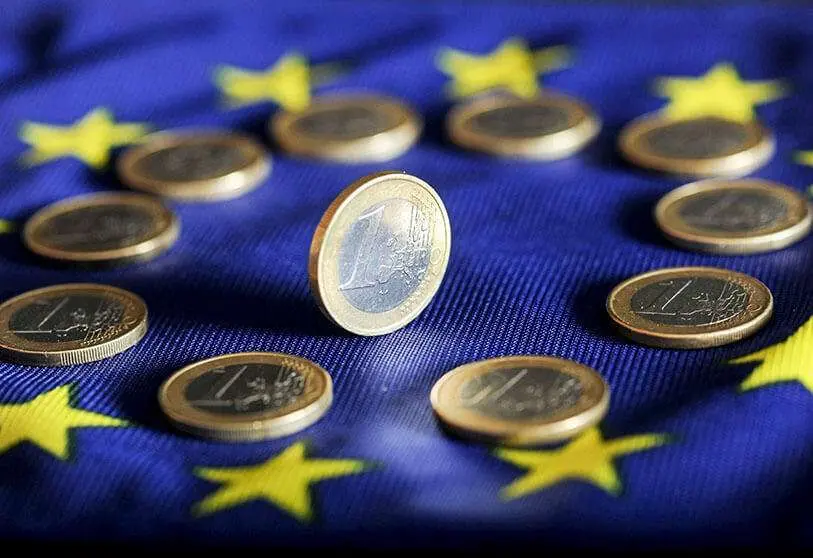Eurozone: has the economy bottomed out?

The end of containment should lead to a return to normal levels of activity in the sectors least disturbed by the VOCA-19 control measures. A second phase of recovery will begin at the end of the year. Containment across Europe has led to the collapse of the Eurozone's GDP, with a 14.4% fall in the first quarter (annualised basis). And, not surprisingly, the falls have been more pronounced in those countries that implemented stricter measures: -8.6% in Germany compared with -21.4% in France, -17.7% in Italy and -19.4% in Spain.
The good news is that the improved health outlook is leading to a gradual relaxation of containment and that no signs of a second wave of contagion have appeared in the countries that first applied less restrictive control measures (such as Austria, Germany, etc.). This should trigger a first phase of economic recovery until the end of the year, or more precisely a return to normal levels of activity in the sectors less disturbed by the Covid-19 control measures. A second phase of recovery will begin at the end of the year.
The May Eurozone PMI indices show a strong rebound from the abysmal depths of April, with the composite PMI rising from 13.6 to 31.9. The rebound in the services sector is spectacular: after plummeting from 52.6 in February to 12 in April, it recovered to 30.5 in May, although it is still particularly low. The manufacturing PMI rose from 33.4 to 39.4. PMI indices are usually closely correlated to economic growth, but this is unlikely to be sustained in the coming months, as traditional cyclical mechanisms will not be the only factors at play in the economy.
France, Germany and the European Commission have presented a recovery plan of EUR 750 billion (5.4% of EU GDP). 750 billion (5.4% of EU GDP). Funds for this extraordinary supplement to the multiannual financing framework will be raised on the bond markets and redirected to the most affected sectors and regions in the form of grants ('500 billion) and loans ('250 billion) over a three-year period starting in January 2021. Italy and Spain are likely to be the first recipients. This recovery plan must be approved by all 27 EU Member States, but will not be well received by the "frugal four" (Austria, Denmark, Sweden, the Netherlands) given their resistance to the idea of debt pooling. They seek assurances that the funds will be used properly, as well as a commitment to reform.
Confinement has caused GDP to fall 4.8% year-on-year in the first quarter. It is the steepest drop since the 2008 crisis and is expected to be even steeper in the second quarter, as the economy stalled in most states in April. The Federal Reserve of Atlanta, which calculates GDP weekly on the basis of published data, estimates that the contraction in the second quarter is around 40% (annualised basis).
The April employment report illustrates the scale of the impact: 20.5 million jobs were lost during the month and the unemployment rate is now at 14.7%, an all-time high since the Great Depression of the 1930s. This figure probably underestimates the deterioration. The rise in unemployment coincides with the increase in shortened working hours, which is positive in terms of the chances of recovery. However, care must be taken since those who attribute their unemployment status to Covid-19 would be counted in this category. The strong increase in average hourly wages in April (4.7%) is due to underlying components, as most of the jobs lost were low-wage jobs.
Weekly labour market data are sending mixed signals. New unemployment claims have fallen in recent weeks, but remain extraordinarily high. The number of people receiving unemployment benefits seems to be stabilizing, which means that some of the unemployed are returning to work, a positive sign. Although it still seems too early to say that the US labour market is recovering, May's confidence surveys are recovering from their low levels. The Markit PMI indices rise from 36.1 to 39.8 in the manufacturing sector and from 26.7 to 37.5 in the services sector.
On a positive note, the pandemic seems to be past its worst. Since the peak in mid-April, the number of new cases has gradually declined and there has been a marked drop in the number of new deaths. The improved health outlook has allowed most federal states to reopen their doors, which should result in an upturn in activity from the third quarter onwards.
Confinement led China's first quarter GDP to fall by 33.8% (annualised basis), causing a year-on-year decline of -6.8%. This record contraction hides an economic upturn that began in March and is confirmed by the April data. The year-on-year growth of industrial production was again positive, at 3.9% compared with -1.1% in March, as was investment, which stood at 0.8% compared with -9.3% in March.
However, in year-on-year terms, the services index recorded -4.5% and retail sales -7.5%, compared with -9.1% and -15.8% respectively in March. The breakdown of retail sales shows a notable upturn in car purchases and spending on household equipment, while the improvement is less pronounced in spending on food services, which is the only component of services included in retail sales. PMI surveys have rebounded strongly from their February lows.
During the National People's Congress, authorities announced that they were abandoning their annual growth target due to uncertainty. The stated goal of economic policy will now be to support employment and investment. Fiscal and monetary policy stimulus measures will be implemented. The Chinese government has also committed to implementing the US-China trade agreement, but renewed tension between China and the US is something that needs to be addressed.
